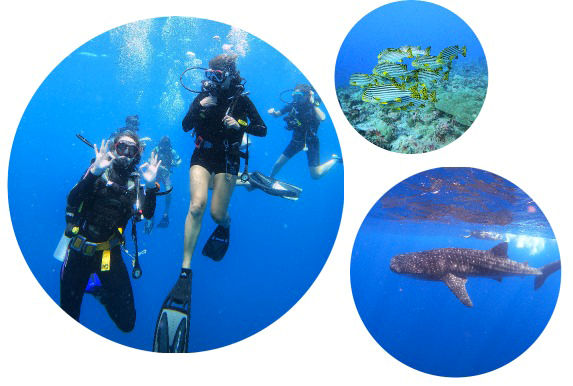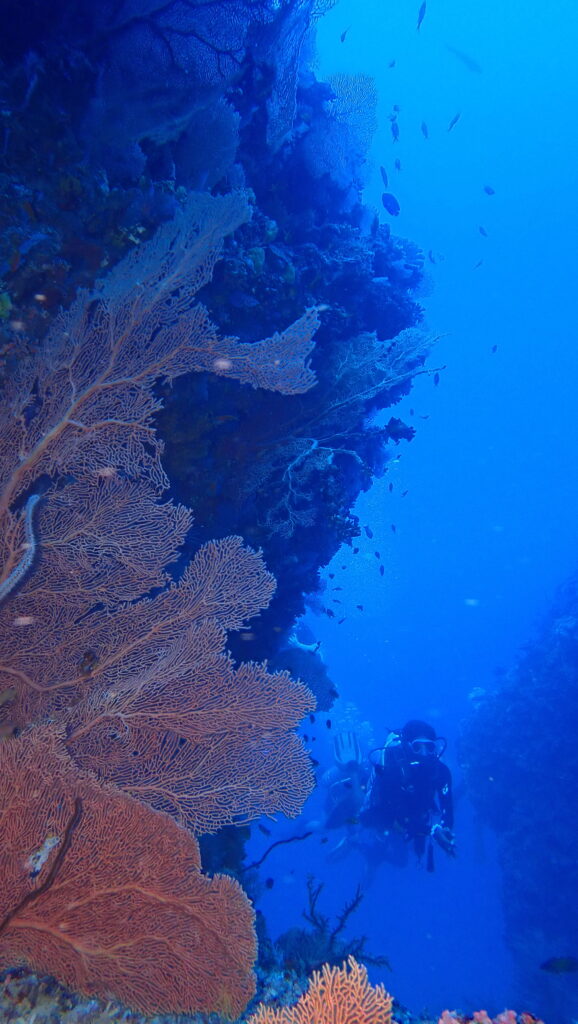Diving in Ari Atoll, Maldives.
As a certified scuba diver, what is it that you seek?
What is under your bucket list?
Most divers travel to the Maldives to tick off most of the objectives on their bucket list and we do understand that.
Here in Scuba Therapy Maldives, Ari Atoll is that hub for dive enthusiasts, and with guest houses from the islands, you can easily have a comfortable nesting position and dive off from a base.

Marine life
Ari Atoll is famous for encounters with large varieties of fish life and its diversity among many enthusiastic divers. Hangnaameedhoo is located in the middle of the Atoll, and this gives us the flexibility to explore the North and South part of Ari Atoll, offering the expected and unexpected encounters for all the divers.
Whale sharks and manta ray encounters are among the bucket list of many visitors to the Maldives, and we are proud and blessed enough to say that we encounter mantas and whale sharks throughout the year in South Ari Atoll. Among other encounters are large pelagics, such as different types of sharks and other types of rays. Apart from these, large schools of different coloured or shaped fish, octopus, turtles, varieties of moray eels, shrimps, crabs, flatworms and thousands of other macro life are found in abundance in these prestigious waters.
Coral growth in Ari Atoll has been improving fast since the last ‘El Nino” (heat wave) in 2016, and there are specific sites with large endless areas covered with soft and hard corals.
Maldives is famous for its marine diversity and abundance of fish life. We are dive enthusiasts and our goal is to show you all its underwater wonders.
Types of Reef
There are 4 major types of reef structures that you need to understand, and also get familiar with local terms, as these 4 terms are used often to name the sites.

Long reef (Faru)
Faru is where the current moves from along the length of a reef.
Usually considered easy to dive at, slow-paced and spot small to macro fishlife, occasionally spotting some larger species.
Ideal for beginner divers.
Some reefs also have caves or pockets or large overhangs where you can swim in through. Some reefs are sloping while other reefs are a wall.
Shallow Pinnacle (Giri)
Giri is sometimes found at the end of dive site names.
Giri is an underwater pinnacle where it is somewhat too shallow for a boat to pass on top. The top of a giri can range from 1m to 5m and are usually a bit broader and oval, or rounder shape, than a Thila.
Deep Pinnacle (Thila)
Thila is also often found at the end of dive site names.
Thila is an underwater pinnacle deep enough for boats to pass directly on top. The top of a thila can range from 5m to 18m on top.
Thila is more exposed to currents than Giri.
Channels (Kandu)
Kandu is where the water moves into or out of the atoll.
Channels can have different characteristics, they can be deep or shallow, wide or narrow.
The water movement speed in the channels is referred to as the strength of the current, which can range from almost no current to OMG!!.
Sometimes there are split points on the channel corners where the ocean and the channel currents are not in the same direction.
The strength of the current depends on different factors, such as tide, moon phases and time of the year.
Diving in currents can be rewarding but may require developing a few skills.
Often large fish, pelagics, and schooling fish are observed on channel dives.